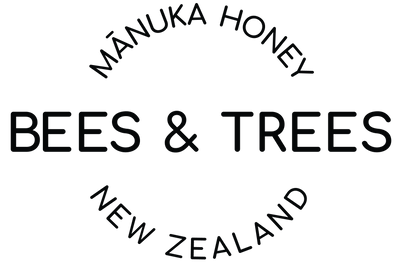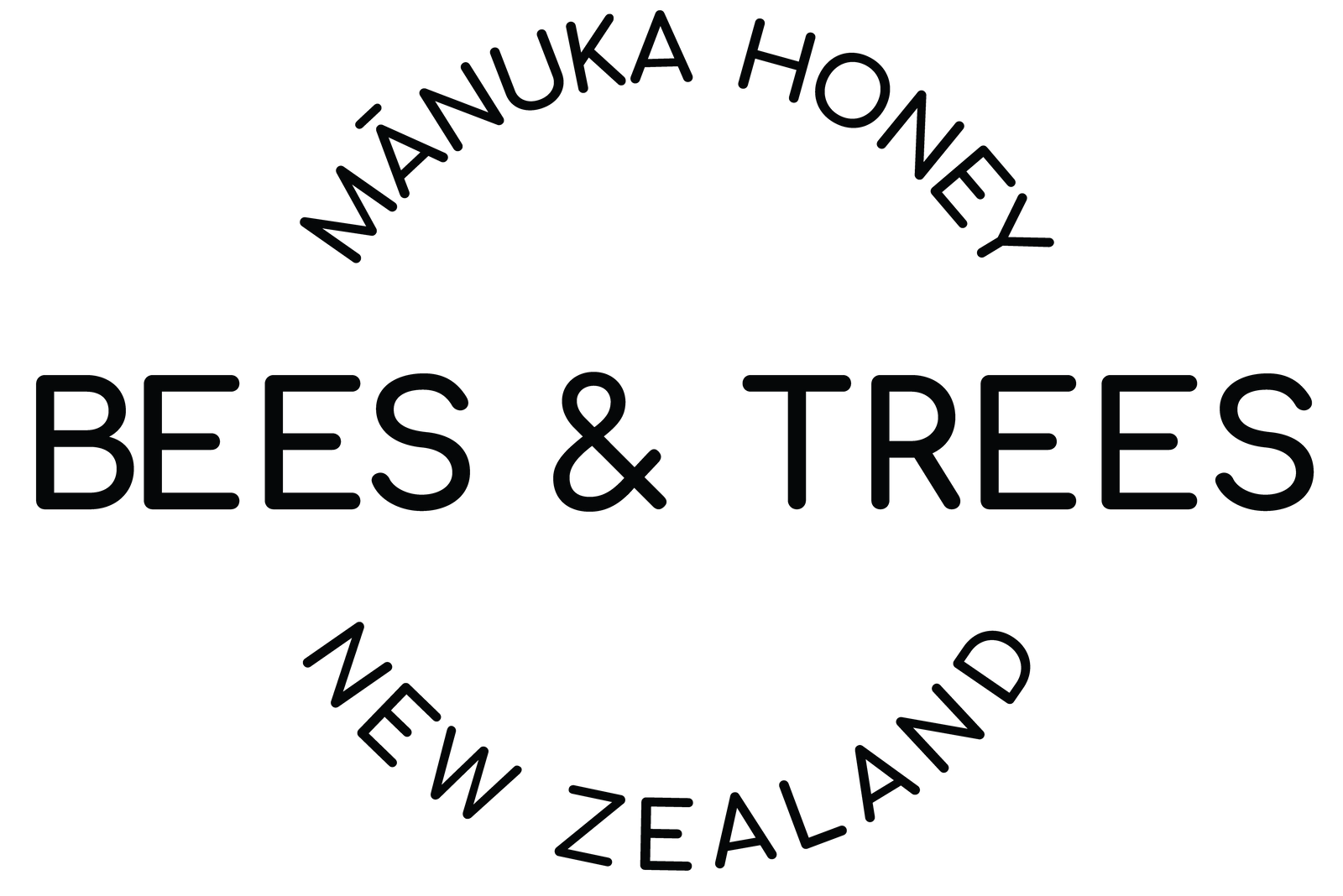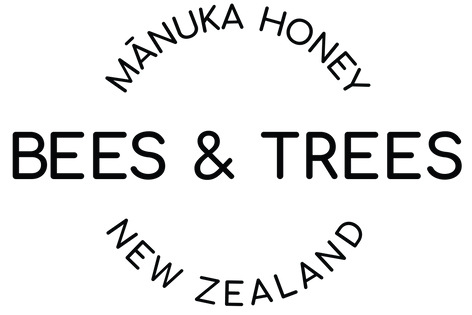“When buying Mānuka honey, how do I know I’m getting the real thing and paying a fair price?”
We often get this question, and the truth is that not all Manuka honey is created equal.
When purchasing Manuka honey, many first-time shoppers can be confused about what they should look for or what some labels may even mean. If you feel this way, you are not alone!
Before you decide to buy Manuka honey, there are a handful of things you will want to consider. And if it’s your first time, it’s important to recognize these distinctions so you can understand what you’re purchasing.
That’s why we’ve put together this simple, go-to guide to answer fundamental questions like how to choose Manuka honey, what Manuka honey to buy, and where to buy Manuka honey. We hope it gives you the knowledge to make the perfect Manuka honey purchase!
What is Manuka Honey?

Manuka honey is produced by ordinary honey bees foraging on the nectar of the flowering Mānuka tree, which is native to and grows predominantly in New Zealand.
Manuka honey is the most expensive honey in the world and is valued for its wellness, healing, wound care, and nourishing skincare benefits.
Manuka honey has a potent and broad spectrum of antibacterial, antiviral, antioxidant, anti-inflammatory, and antiparasitic properties. These properties combined can support stronger immunities, help fight cold/flu/virus infections, support better digestive health, and much more. If you want to learn more about Manuka honey’s benefits and uses, check out our blog.
What Is MGO in Manuka Honey?
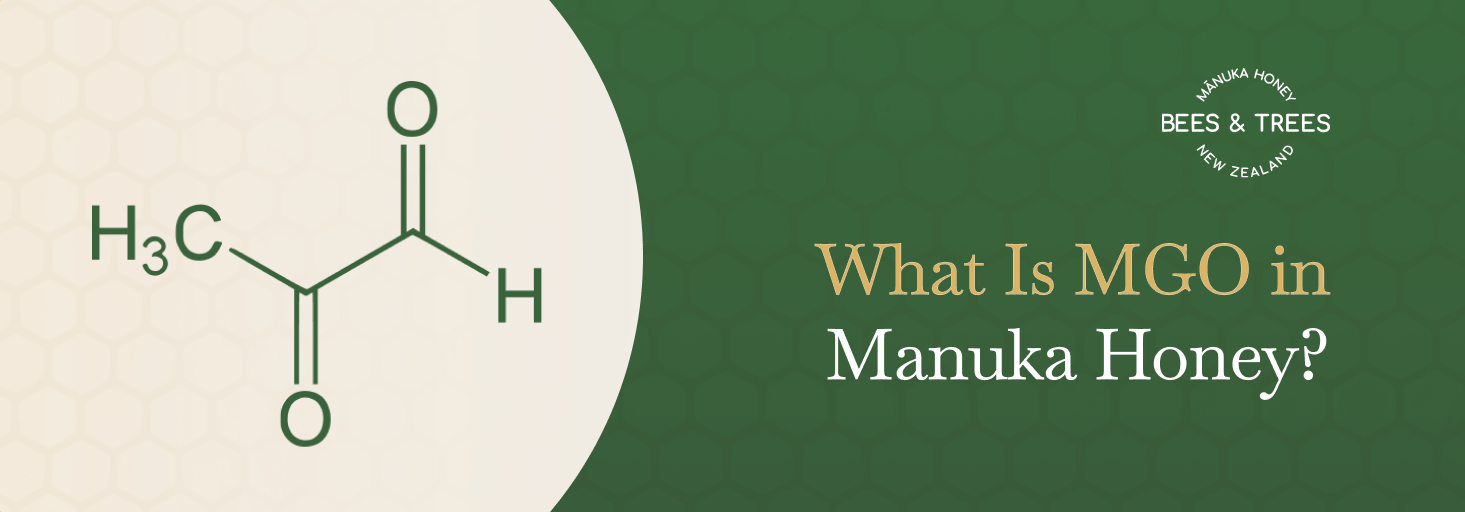
Methylglyoxal is a naturally occurring organic compound found in varying concentrations in Manuka honey. It is commonly abbreviated as either MG or MGO. A direct correlation exists between the MG level of the honey and the antibacterial property of the honey. Higher MG concentrations in Manuka honey, therefore, provide more efficacy or potency in regard to the overall health, wellness, and healing properties of the honey.
All Manuka honey, when produced in New Zealand, is tested first and foremost for its MG levels. MG is measured in parts per million (ppm) or, stated another way, milligrams per kilogram (mg/kg). Test results for MG content can range from about 85 to over 1000 mg/kg. Below around 85, the honey will be unlikely to pass the definition of Mono-floral Manuka honey, which we’ll discuss later in this article.
The Methylglyoxal level, as determined by independent laboratories, is the primary factor that determines the value of the honey when sold by a producer (i.e., the beekeeper) to a packer who will be labeling and marketing the honey. The MG level should likewise be the key number that you, as a consumer, look at to determine the value of the honey you are purchasing. So, you can expect that as the level of MG rises, so does the price of your Manuka honey.
What Is Non-Peroxide Activity (NPA)?
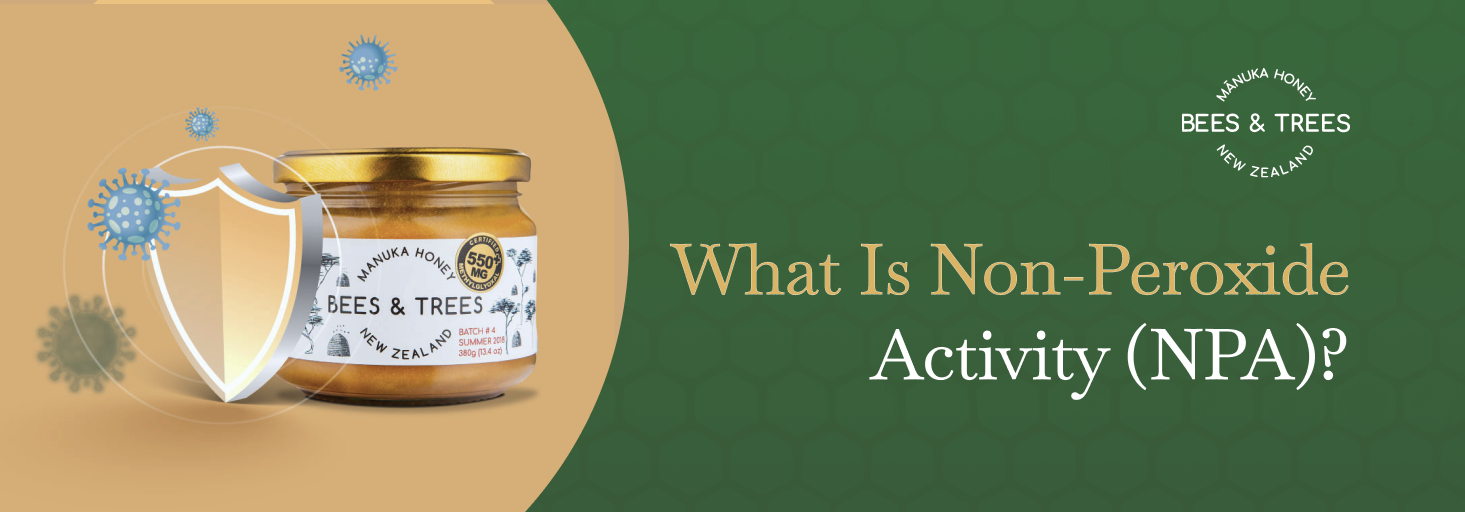
All honey has naturally occurring antibacterial activity due to the conversion of glucose oxidase to hydrogen peroxide. This antibacterial activity is referred to as peroxide activity (PA).
Manuka honey is different and special due to its Non-Peroxide activity (NPA), which correlates to the Methylglyoxal level in the honey. NPA activity is much more stable than PA activity with exposure to heat and light. Typically, NPA ratings for Manuka honey will range from 5-20, which correlates to about 85 – 830 MG in mg/kg.
What Is UMF In Manuka Honey?

The Unique Manuka Factor Honey Association is an industry group in New Zealand that promotes quality standards, supports scientific research, and provides marketing support for its members.
The UMF Honey Association administers a trademark-protected grading system that correlates to the MG testing, which is the overall industry standard. UMF-labeled honey is also tested for and confirmed to have minimum required levels of leptosperin and not to exceed maximum levels of hydroxymethylfurfural (HMF). HMF is a breakdown product of fructose and is used broadly in the industry as a quality measure to ensure that the honey has not been overheated.
Taking into account these two additional tests, a UMF rating value will be equivalent to an NPA value, both of which are direct look-up values based on the MG testing result.
In short, MG, UMF, and NPA are all directly correlated to each other and are used to express similar values for Manuka honey. Specifically, these measures represent the potency of antimicrobial and antibacterial properties brought about by the abundance of the MG levels present in the honey.
What to Look for When Buying Manuka Honey - Manuka Honey Labels
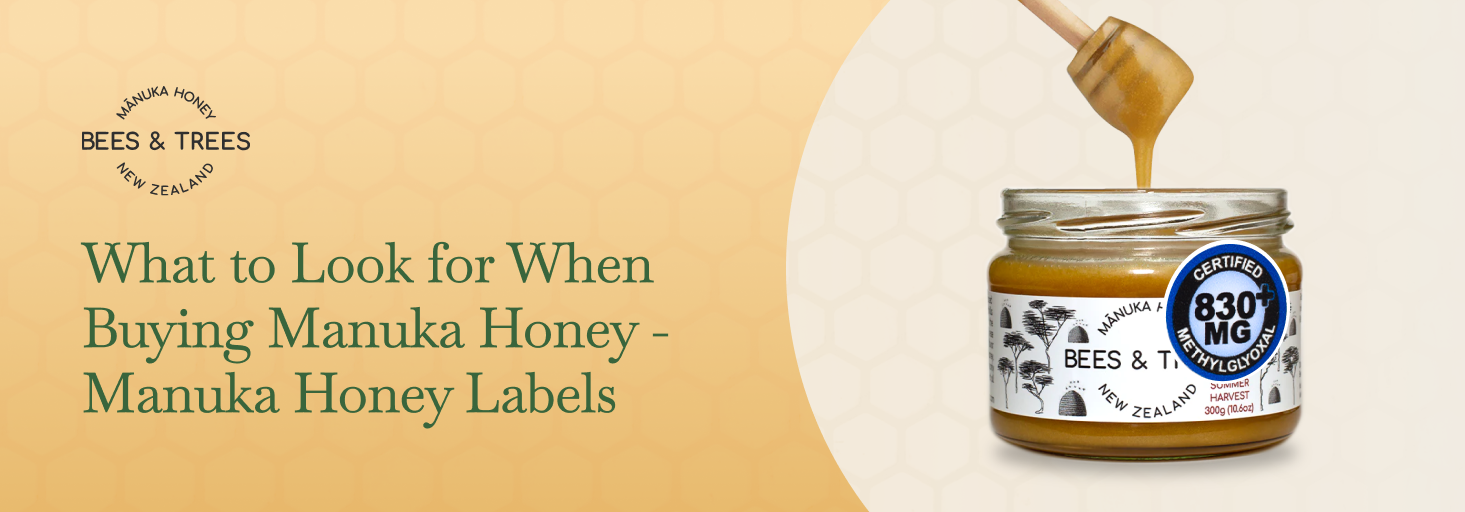
You should look for a Manuka Honey brand that is either displaying the MG level or the UMF value prominently on the front of the label. UMF is trademarked, and UMF members will have the letters UMF in front of the rating number. Avoid any brand that has words like “activity,” “bio-activity,” or “factor” followed by a number. These brands are employing deceptive marketing practices to mislead the consumer into thinking the honey has the same level of NPA activity as UMF honey of the same rating. Just look for the letters UMF and a number or the letters MG or MGO and a number. Steer clear of all others.
Applying this first filter will eliminate about 80% of the Manuka honey on sale in the US market, including most of the honey carried by big box retail chains, including some names you may currently consider trustworthy. This is a pervasive problem. ABC’s Good Morning America did an expose on this very subject which is available here.
Brands that are trying to deceive you might include something on their label about DHA (Dihydroxyacetone) levels. DHA is a precursor organic compound that converts to MG over time. DHA levels are often ten times higher at harvest than MG levels, which makes big DHA numbers on labels sound impressive. Don’t fall for this ploy. For a detailed explanation of this conversion of DHA to MGO, see this article published by Analytica Laboratories, a primary independent lab that performs honey testing in New Zealand.
Other brands will quote a number for “Total Activity” or “Total Peroxide Activity.” As discussed above, all honey, including the local honey from your farmer’s market, will have a level of antiseptic property based on its peroxide activity. Don’t be misled or impressed by this claim.
Lastly, the brands that seek to mislead will make statements that tout how the honey meets the NZ Government's stringent standards defining mono-floral (or multi-floral) Manuka honey. These standards are discussed in more detail below, but truthfully they’re just basic threshold measures. No Manuka honey can be legally exported from New Zealand without meeting these test requirements. So think of this as an entry to the game, not a claim to brag about.
Which Is the Best Manuka Honey Brand? - Comparing Legitimate Brands

When comparing different honey brands, first look at equivalent MG levels. The lowest activity levels for mono-floral Manuka honey will be in the range of 85 mg/kg of MG or about a 5+ on the NPA and UMF scales. These honeys may provide some wellness benefits when consumed daily.
Our advice to anyone would be to select a Manuka honey of at least 250+MG levels (NPA 10+) for daily consumption and a 500+MG (NPA 15+) when going for a specific therapeutic effect for a health issue or for wound healing applications.
You need to compare apples to apples. So first, determine what range of activity levels you are shopping for. Think “low,” “mid,” and “high” activity Manuka honey. Once you know which level you desire, you can start to compare brands and pricing. We define “low” as MG in the below 200+ range, “mid” as MG in the 300-400+ range, and “high” as MG greater than 500+.
Next, you need to look at the package size. Manuka honey typically comes in 250gm, 380gm, and 500gm size jars (or 8.8oz, 13.4oz, and 1.1lb). So the comparison should be for comparable activity levels on a per-ounce basis. If you shop on Amazon, or if you just want to try this out, you can search Manuka Honey 500+ and Manuka Honey UMF 15+. Amazon will display the pricing in $/oz. so you can easily compare.
Manuka honey above NPA 15+ (MG 514+) is a rare commodity. Based on an analysis of honey samples from the past two seasons of production, roughly only 10% of Manuka honey harvested across New Zealand will get to this level or higher. You’ll find at the high end of the MG scale brands displaying a UMF 20+, which equates to an MG 829+.
Mono-Floral, Multi-Floral, and MPI Manuka Honey Standards

The New Zealand Ministry for Primary Industries (MPI) stepped into the Manuka Honey space with a set of regulations aimed to curb deceiving marketing practices and protect NZ’s reputation for high-quality agricultural exports. The MPI Manuka honey standards were established in February 2018. Now, in addition to the MG & DHA tests that are used as the primary means of establishing the honey’s value and efficacy, there are five mandatory tests required for export authorization.
Known as the MPI 5, they consist of 4 chemical markers and 1 DNA marker. Based on the results of these tests, honey is classified as monofloral, multifloral, or non-Manuka. To relate this back to the MG tests and the rating scales we discussed earlier, almost all Manuka with an MG rating of 100 or better will meet the Mono-Floral level on this test.
Conclusion
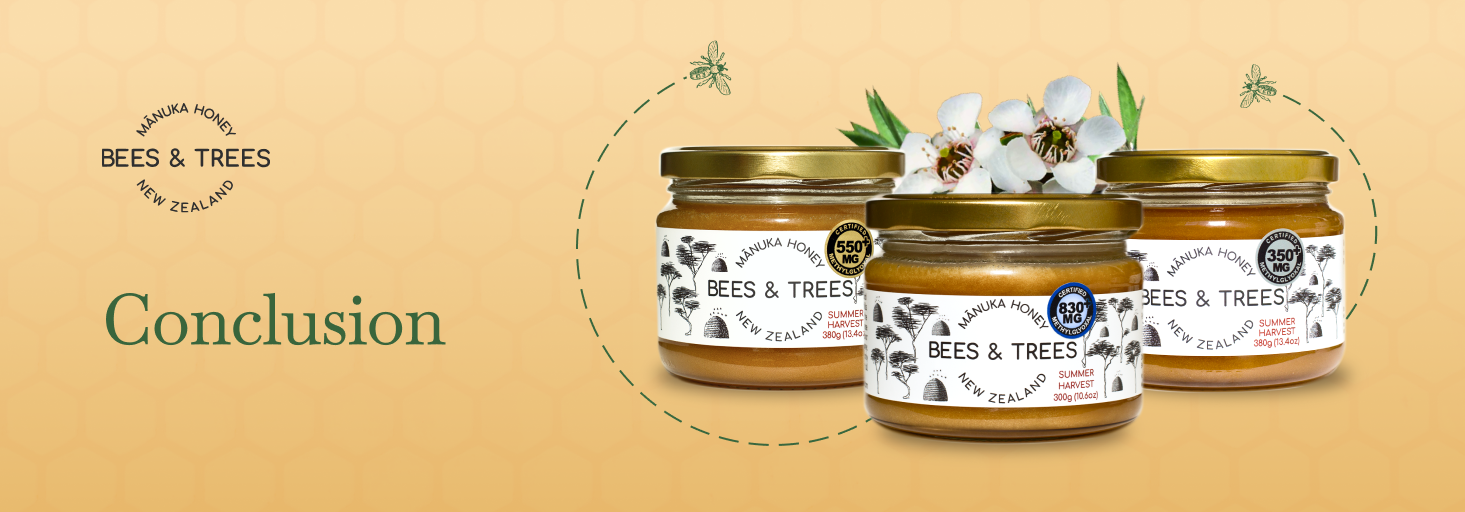
When purchasing Manuka honey, remember that the most important thing to look for is either the MG or MGO test results on the label or a correlated UMF rating. We suggest an MG 250+ or higher (or UMF 10+ or higher) to experience some of the wellness and healing benefits.
Avoid purchasing jars of Manuka honey that use terms like “Bio-activity,” “Active,” or “factor,” and also be wary of phrases like “High DHA Levels,” “Total Peroxide Activity,” or “Meeting Monofloral Standards.”
Truly, the only thing that you should look for is the MG/MGO concentration or a UMF rating on the label to determine the level of potency that you desire from your Manuka honey!
Where to get Manuka honey: Interested in trying Manuka honey? How about straight from New Zealand? Bees & Trees offers some of the most delicious and pure honey available on the planet. Crafted by a small team of dedicated apiarists in New Zealand’s Taranaki Region, Bees & Trees Manuka honey guarantees the most authentic and best-tasting Manuka honey you can find!
